Key Types of Hormone Therapy and Their Effects
HRT and You: A blog series by Arrive Therapy
The Overview:
Feminizing Hormone Therapy: Estrogen
Estrogen: Promotes feminine characteristics such as breast development, softer skin, and wider hips.
Anti-androgens: Blocks the production and effects of testosterone, aiding in the reduction of masculine features. 1,2.
Masculinizing Hormone Therapy: Testosterone 1,2.
Testosterone: Induces masculine characteristics including a deeper voice, increased body and facial hair, and a more muscular appearance. It also halts menstrual cycles
Gender Fluid Hormone Therapy:
Hormone therapy may be taken in small doses by individuals who don’t identify as strictly male or female, resulting in a more androgynous or feminine appearance. 1.
When you are supported in your gender exploration, your personality is allowed the freedom to bloom.
Methods and Guidelines for Both Transgender Women and Transgender Men
For Transgender Women (MTF)
Administration Methods:
1. Oral Estrogen: Oral conjugated estrogens or 17-beta estradiol are common forms, with dosages ranging from 2–6mg/day[2].
2. Parenteral Estrogen: This includes estradiol valerate or cypionate injections, with dosages of 5–20mg intramuscularly (i.m.) every two weeks or 2–10mg i.m. weekly[2].
3. Transdermal Estrogen: Estradiol patches are applied, with dosages ranging from 0.1–0.4mg twice a week[2].
4. Anti-Androgens: Spironolactone (100–200mg/day, up to 400mg) or cyproterone acetate (50–100mg/day) are used to block testosterone effects. GnRH agonists may also be used[2].
Dosage and Monitoring:
Estrogen therapy aims to achieve serum estradiol levels in the female range (testosterone <30 ng/dl, E2 <200 pg/ml) while monitoring for feminizing and adverse effects every 3–6 months during the first year, then every 6–12 months[2].
Monitoring should include serum testosterone and estradiol levels, prolactin, triglycerides, and potassium levels if taking spironolactone[2].
For Transgender Men (FTM)
Administration Methods:
1. Oral Testosterone: Testosterone undecanoate is taken orally, with dosages of 160–240mg/day[2].
2. Parenteral Testosterone: Testosterone enanthate or cypionate injections are administered with dosages of 50–200mg/week or 100–200mg every two weeks. Testosterone undecanoate injections are another option, with a dosage of 1000mg every 12 weeks[2].
3. Transdermal Testosterone: Testosterone gel (1%) is applied daily with dosages of 2.5–10g/day, and testosterone patches are used with dosages of 2.5–7.5mg/day[2].
Dosage and Monitoring:
The goal for transgender men is to increase testosterone levels to the normal male range (300–1000 ng/dl) while monitoring for virilizing and adverse effects every 3–6 months during the first year, then every 6–12 months[2].
Monitoring should include serum testosterone levels, hematocrit, lipid profile, and bone mineral density (BMD) screening for patients at risk for osteoporosis[2].
General Considerations
- Informed Consent: Before starting HRT, patients should undergo a thorough psychosocial assessment and provide informed consent[4].
- Individualized Treatment: The choice of HRT regimen should be tailored to each individual's medical history, goals, and preferences[6].
- Health Monitoring: Regular monitoring is crucial to adjust dosages and ensure the safety and effectiveness of the therapy[2][4].
This overview highlights the importance of personalized care and regular monitoring in the administration and dosage of hormone replacement therapy for gender-affirming care.
References:
https://www.dukehealth.org/treatments/adult-gender-medicine/gender-affirming-hormone-therapy
https://www.templehealth.org/services/treatments/gender-affirming-hormones
https://www.mayoclinic.org/tests-procedures/feminizing-hormone-therapy/about/pac-20385096
https://transcare.ucsf.edu/article/information-estrogen-hormone-therapy
https://www.bumc.bu.edu/endo/clinics/transgender-medicine/guidelines/
https://www.mayoclinic.org/tests-procedures/feminizing-hormone-therapy/about/pac-20385096
Arrive Therapy can help you with your mental health in regards to your gender.
Visit our Gender Therapy page to find out more.
PLEASE NOTE: Arrive Therapy and its staff are not medical doctors. Hormone therapy should be undertaken under medical supervision, as it can have various effects and risks, including potential impact on weight, acne, mood changes, and increased risks of serious medical conditions such as heart disease, blood clots, and diabetes.



